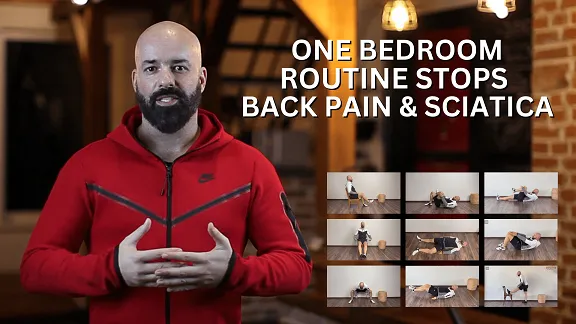Are you ready to embark on a journey towards a healthier and fitter you? In this article, you will discover the key steps to creating a successful fitness plan that will help you achieve your wellness goals. From setting realistic objectives to finding the right exercises and staying motivated, this comprehensive guide will provide you with all the tools and knowledge you need to kickstart your fitness journey and make lasting changes to your health and well-being. Get ready to take charge of your fitness and unlock a happier, healthier version of yourself!
Setting Goals
Identify your fitness goals
Setting goals is an essential first step when creating a successful fitness plan. Take some time to think about what you want to achieve through your fitness journey. Do you want to lose weight, gain muscle, improve your endurance, or simply lead a healthier lifestyle? By identifying your specific fitness goals, you can create a plan that is tailored to your needs and desires.
Make your goals specific and measurable
When setting fitness goals, it’s important to make them specific and measurable. Instead of saying, “I want to get in shape,” try setting a goal such as, “I want to run a 5k race in under 25 minutes.” This gives you a clear target to work towards and allows you to track your progress along the way.
Set realistic and attainable goals
While it’s great to dream big, it’s important to set realistic and attainable goals. Setting goals that are too difficult or unrealistic can lead to frustration and disappointment. Take into consideration your current fitness level, time constraints, and other commitments. By setting achievable goals, you will be more motivated to stick to your fitness plan and celebrate your successes along the way.
Assessing Current Fitness Level
Evaluate your current fitness level
Before diving into a fitness plan, it’s important to evaluate your current fitness level. This helps you understand where you are starting from and allows you to track your progress over time. Consider factors such as your cardiovascular endurance, strength, flexibility, and overall health.
Consider your strengths and weaknesses
Once you have evaluated your current fitness level, take note of your strengths and weaknesses. Are you naturally more inclined towards cardio exercises or strength training? Are there any areas of your fitness that you need to work on? This self-assessment will help you choose the right activities and exercises to incorporate into your fitness plan.
Identify any health or medical concerns
It is crucial to consider any health or medical concerns before starting your fitness journey. If you have any pre-existing conditions or injuries, consult with a healthcare professional or fitness expert to ensure that your plan is safe and suitable for your needs. They can provide guidance on modifications or exercises that may be beneficial for your specific situation.

Choosing the Right Activities
Find activities you enjoy
One of the most effective ways to stay motivated and committed to your fitness plan is by finding activities that you genuinely enjoy. Whether it’s running, swimming, dancing, or participating in a team sport, choose activities that you look forward to and feel excited about. This will make your workouts feel less like a chore and more like an enjoyable part of your lifestyle.
Consider your preferences and interests
In addition to finding activities you enjoy, consider your preferences and interests when choosing exercises for your fitness plan. If you prefer working out alone, activities like jogging or cycling may be ideal. On the other hand, if you enjoy social interactions, group fitness classes or team sports might be more suitable. By aligning your activities with your preferences, you are more likely to stick with your plan long-term.
Mix cardiovascular exercises with strength training
To create a well-rounded fitness plan, it is important to incorporate both cardiovascular exercises and strength training. Cardiovascular exercises, such as running, cycling, or swimming, help to improve your heart health, burn calories, and increase endurance. Strength training exercises, such as weightlifting or bodyweight exercises, help to build and tone muscles, improve bone density, and boost metabolism. By combining both types of exercises, you maximize the benefits for your overall fitness and health.
Creating a Schedule
Determine how often you can exercise
When creating a fitness plan, it’s important to determine how often you can realistically commit to exercise. Assess your schedule and determine the number of days per week that you can dedicate to workouts. Consistency is key, so choose a frequency that you can maintain over the long term.
Allocate time for different types of workouts
Once you have determined how often you can exercise, allocate time for different types of workouts. Consider the recommended guidelines for cardiovascular exercise and strength training and ensure that your schedule allows for a balanced combination of both. For example, you may decide to dedicate three days a week to cardiovascular exercises and two days a week to strength training.
Consider your daily routine and commitments
When creating your fitness schedule, take into account your daily routine and commitments. Think about the best times of day for you to exercise and how your workouts can fit seamlessly into your existing schedule. Whether it’s early morning workouts before work, lunchtime exercises, or evening sessions, choose a time that works for you and that you can consistently stick to.

Structuring Workouts
Warm-up and stretching exercises
Before diving into your main workout, always start with a warm-up and stretching routine. This helps to prepare your body for exercise, increases blood flow to your muscles, and reduces the risk of injury. Spend 5-10 minutes engaging in light cardio exercises, such as brisk walking or jogging in place, followed by dynamic stretches that target major muscle groups.
Cardiovascular exercises
Cardiovascular exercises, also known as aerobic exercises, are an essential component of any fitness plan. These exercises increase your heart rate, improve lung function, and burn calories. Choose activities that you enjoy, such as running, swimming, cycling, or dancing, and aim for at least 150 minutes of moderate-intensity aerobic exercise per week, or 75 minutes of vigorous-intensity exercise if you prefer higher intensity workouts.
Strength training
Strength training exercises are crucial for building muscle, increasing strength, and boosting metabolism. Incorporate exercises that target all major muscle groups, such as squats, push-ups, lunges, and planks. Aim for at least two days of strength training per week, making sure to allow for rest days in between to allow your muscles to recover and grow.
Cool-down and stretching exercises
After completing your main workout, it’s important to cool down and stretch your muscles. This helps to gradually lower your heart rate, prevent muscle soreness, and improve flexibility. Spend 5-10 minutes engaging in light cardio exercises, such as walking, followed by static stretches that target the muscles you worked during your workout.
Tracking Progress
Use a fitness tracker or journal
To stay motivated and track your progress, consider using a fitness tracker or journal. These tools allow you to record your workouts, monitor your heart rate, track your steps, and even analyze your sleep patterns. Seeing your progress and improvements can be incredibly motivating and help you stay on track with your fitness plan.
Monitor your workouts and progress
In addition to using a fitness tracker or journal, make it a habit to monitor your workouts and progress. Keep track of the exercises you perform, the number of repetitions or sets, and the weights or difficulty levels you use. This allows you to see how you are progressing over time and make adjustments to your plan as needed.
Adjust your plan as needed
As you progress on your fitness journey, it’s important to periodically assess and adjust your plan. If you find that certain exercises or activities are no longer challenging, consider increasing the intensity or trying new variations. On the other hand, if you are experiencing pain or discomfort, modify your workouts or seek professional guidance. Stay flexible and adaptable to ensure that your fitness plan continues to align with your goals and needs.

Staying Motivated
Set rewards for reaching milestones
To keep yourself motivated throughout your fitness plan, set rewards for reaching milestones. These can be small rewards for completing weekly workouts or bigger rewards for achieving significant goals. Treat yourself to something you enjoy, like a massage, a new workout outfit, or a weekend getaway. Celebrating your achievements helps to reinforce positive habits and keeps you excited about the journey ahead.
Find a workout buddy or join a fitness group
Working out with a friend or joining a fitness group can be a great way to stay motivated and accountable. Having a workout buddy provides support and encouragement, and can make your workouts more enjoyable. Alternatively, joining a fitness group or class allows you to meet like-minded individuals and participate in group activities that can make exercise feel more engaging and fun.
Keep your workouts varied and interesting
Variety is the spice of life, and the same applies to your fitness plan. Keeping your workouts varied and interesting not only prevents boredom but also challenges your body in different ways. Incorporate different exercises, try new activities, or change up your routine regularly. This keeps your mind and body engaged, ensuring that you continue to progress and maintain your enthusiasm.
Fueling Your Body
Eat a balanced diet
Proper nutrition is crucial for fueling your body and supporting your fitness goals. Aim for a balanced diet that includes a variety of fruits, vegetables, lean proteins, whole grains, and healthy fats. Avoid overly processed foods and sugary drinks, and instead focus on consuming nutrient-dense foods that provide the energy and nutrients your body needs to thrive.
Stay hydrated
Staying hydrated is essential for optimal performance and recovery during your workouts. Drink plenty of water throughout the day, especially before, during, and after exercise. Pay attention to your body’s cues for thirst and aim to drink enough to quench your thirst and maintain proper hydration.
Include pre- and post-workout nutrition
To maximize your workouts and aid in recovery, include pre- and post-workout nutrition. Before your workouts, have a small snack that combines carbohydrates for energy and a small amount of protein to support muscle function. After your workouts, consume a meal or snack that combines carbohydrates to replenish glycogen stores and protein to aid in muscle repair and growth. This can be a protein shake, a piece of fruit with Greek yogurt, or a balanced meal containing lean protein and whole grains.

Getting Adequate Rest
Prioritize sleep and recovery
Rest and recovery are just as important as exercise itself. Prioritize getting adequate sleep each night to allow your body to repair and recharge. Aim for 7-9 hours of quality sleep per night to support optimal athletic performance and overall health. Additionally, incorporate rest days into your fitness plan to give your muscles and joints a chance to rest and recover.
Allow for rest days in your plan
Rest days are an integral part of any successful fitness plan. On rest days, refrain from structured workouts and allow your body to rest and recover. This does not mean you have to be completely sedentary; engaging in light activities such as stretching, walking, or yoga can be beneficial for promoting blood circulation and flexibility.
Listen to your body and avoid overtraining
While pushing yourself to achieve your fitness goals is important, it’s equally important to listen to your body and avoid overtraining. Overtraining can lead to fatigue, decreased performance, increased risk of injury, and even burnout. Pay attention to signs of fatigue, muscle soreness that lasts longer than normal, or changes in your mood and motivation. If you feel excessively tired or notice any negative changes, take a step back and allow your body the time it needs to recover.
Seeking Professional Guidance
Consult with a fitness professional
If you’re new to exercise or have specific goals in mind, consider consulting with a fitness professional. These experts can assess your fitness level, help you set realistic goals, and provide guidance on the best exercises and training methods for your needs. They can also ensure that you are performing exercises correctly and safely, reducing the risk of injury.
Consider hiring a personal trainer or coach
If you desire more personalized attention and guidance, consider hiring a personal trainer or coach. These professionals can create a tailored fitness plan specifically designed for your goals, assess your progress, and provide ongoing motivation and support. Whether you prefer one-on-one sessions or virtual coaching, a personal trainer or coach can be a valuable investment in your fitness journey.
Get medical advice if needed
If you have any pre-existing health conditions or concerns, it is essential to seek medical advice before starting a fitness plan. Your healthcare provider can provide insights on any modifications or precautions you need to take to ensure your safety and well-being. They can also help you navigate any specific challenges or considerations related to your health condition.
Creating a successful fitness plan involves setting goals, assessing your current fitness level, choosing the right activities, creating a schedule, structuring your workouts, tracking your progress, staying motivated, fueling your body properly, getting adequate rest, and seeking professional guidance if needed. By following these steps and staying committed, you can create a fitness plan that helps you achieve your goals and leads to a healthier, happier you. Remember, consistency, patience, and a positive mindset are key ingredients for success on your fitness journey. Good luck!







